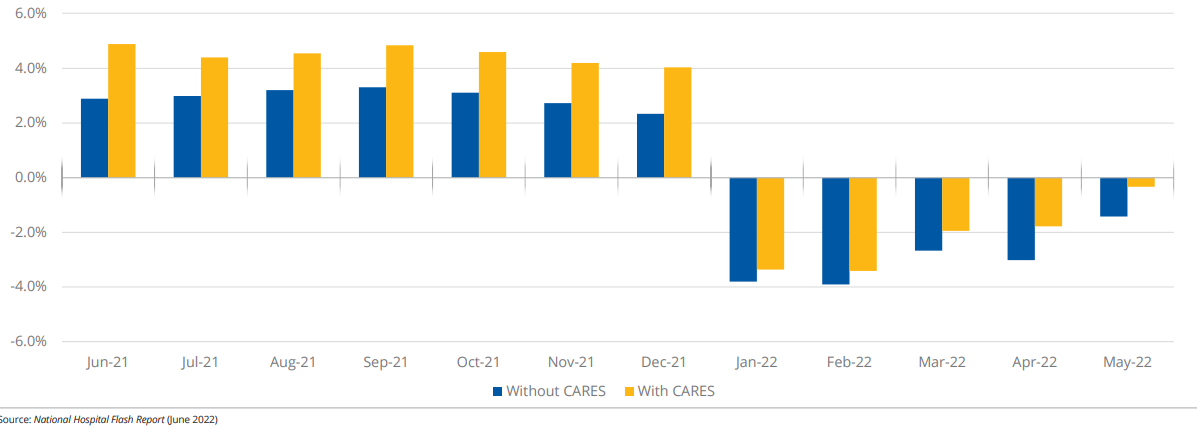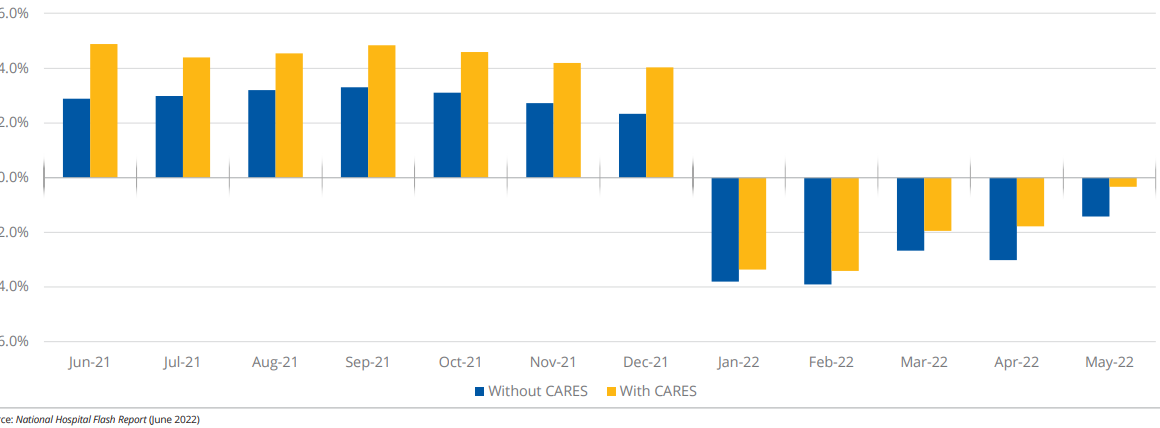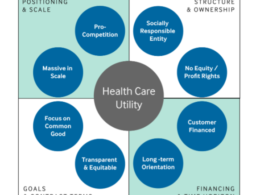Despite a slight improvement in April, hospitals struggled financially in May.
HealthLeaders Media
AMANDA SCHIAVO
JULY 14, 2022
KEY TAKEAWAYS
- Hospitals are still struggling to contain expenses.
- Hospitals are spending more on labor costs with fewer hours worked.
- Warmer weather drove a spike in emergency department visits and overall patient volumes.
Infographic: Operating Margins Index

Despite an improvement in revenue and patient volumes in April, hospitals and health systems are still struggling with rising expenses and depressed margins, according to the latest National Hospital Flash Report from Kaufman Hall-which examined how organizations faired financially in May.
- Total expenses rose 1.1% from April to May 2022, and climbed 10.7% from May 2021, according to the Kaufman Hall data.
- Inflation and labor shortages contributed to total costs climbing 10.4% year-to-date.
- Labor expenses per adjusted discharge were up slightly by 1% from April, but that figure has jumped 13.6% year-to-date, while full time employees per adjusted occupied bed is down 2.7% year-to-date.
This suggests, …that hospitals are spending more on labor costs with fewer hours worked.
This suggests, …that hospitals are spending more on labor costs with fewer hours worked.
“While we begin to see a bit of a return in volumes and associated revenues, expenses continue to climb and so while the performance from the latest May data is compared with April is showing some improvement, it is still significantly below where it was last year in terms of overall profitability, and many of the metrics [are] still underperforming, relative to pre-pandemic levels,” says Erik Swanson, senior vice president of data analytics at Kaufman Hall.
“Halfway through the year and with the report the first five months, we still find ourselves and these organizations with cumulatively negative margins.
That is extremely problematic and given the fact that there is effectively no additional stimulus funding that these hospitals are expecting to receive … hospitals are in a challenging position.”
While depressed margins and increasing expenses spell trouble for hospitals and health systems, the May figures weren’t all bad.
- Revenues saw a slight improvement in May. Gross operating revenue was up 3.4% from April, 7.6% year-over-year, and is up 6.9% year-to-date.
- Outpatient revenue rose 2.2% from April levels, 9.4% year-over-year, and is up 9.1% year-to-date.
Hospitals and health systems must find a way to balance negative margins and expenses with rising volumes and revenues-it’ll be a challenge, Swanson says, but there are strategies to utilize to get it done.
Hospitals and health systems must find a way to balance negative margins and expenses with rising volumes and revenues-it’ll be a challenge, … but there are strategies to utilize to get it done.
“While volumes have returned, we’re also seeing an increase in the average length of stay, so the patients coming in tend to be sicker,” Swanson says.
“Those patients coming in will be greater utilizers of some of these resources than in the past.
There are quite a few controls that hospitals can put in place and levers they can hold to help manage those types of patients and expenses. The reality is that labor expense is still quite elevated, relative to just about any time.”

Pulling the right levers
Hospitals are seeing an increase in the number of FTEs per each adjusted occupied bed, Swanson says, which indicates that hospitals are hiring more than before.
However, there is still a labor shortage and hospitals will need to act to manage labor expenses.
Hospitals are seeing an increase in the number of FTEs per each adjusted occupied bed,… which indicates that hospitals are hiring more than before. However, there is still a labor shortage and hospitals will need to act to manage labor expenses.
“Reevaluating the types of individuals and skill sets that they are hiring,” is one tactic Swanson says hospitals can take.
“Thinking about secure delivery models, having everyone work potentially at the top of their license and perhaps setting up structures in which more expensive, more technical resources are overseen.
This is something that’s proved to be quite beneficial without impacting the quality of care.”
Contract labor is another expense that has been weighing on hospitals and health systems and anything organizations can do to ameliorate that burden will be valuable for a financial turnaround.
Options include thinking about ways to optimize their workforce through data-driven workforce techniques, and the development and reevaluation of float pools, Swanson says.
Hospitals can also look at patient demand unit by unit to get a better understanding of where they can appropriately flex individuals where needed.
There are several options to address the labor expense side of things, but labor isn’t the only factor in the hospital expense challenge.
“There are quite a few levers on the non-labor side that hospitals and health systems can pull,” Swanson says.
“While some of these challenges-taking drug prices as an example-are not necessarily under the control of these organizations, that doesn’t account for the vast majority of non-labor spenders on a variety of other components-supplies, purchase services, and other expenses.”
Reevaluating non-labor contracts to get better pricing on products and services they are buying is one key way hospitals and health systems can get a hold of their spending, Swanson says.
Examining their supply chain to allow a more efficient flow of these materials across the systems and eliminating redundancies and waste across the organizations can also help contain non-labor expenses.
Since the onset of the pandemic, people have wondered when things will return to normal, and it is no different for hospitals and health systems.
They want to know when they’ll see expenses ease and when they’ll see a return to stabilized profitability.
“It is less of a question of when will expenses go back to normal and I couldn’t even tell you what normal is anymore,” Swanson says.
“But it’s thinking about the environment in which these organizations have been hit with these highly elevated expenses.
I think what many hospitals are asking themselves and thinking is how do we operate and manage within that environment the best we can.
Organizations are not expecting that these expenses will go back down anytime soon to pre-pandemic levels, they will remain elevated.
And so, it’s about choosing how care is being delivered, and optimizing the resources and the spending to their best ability and, ultimately, evaluating what is it that is necessary to provide for the patient and those areas that may be lower priorities than they can begin thinking about potentially rationing or not.”
Amanda Schiavo is the Finance Editor for HealthLeaders.
Originally published at https://www.healthleadersmedia.com.











